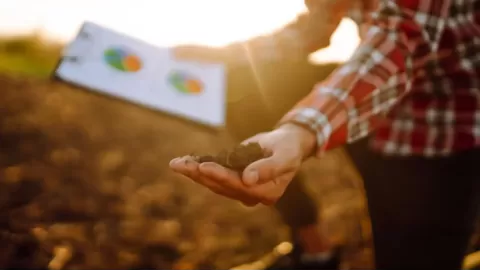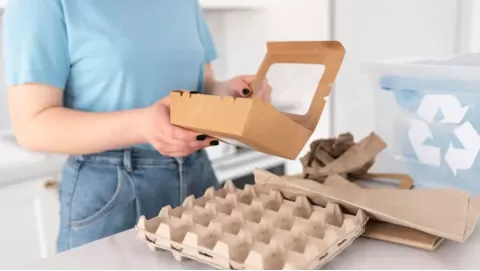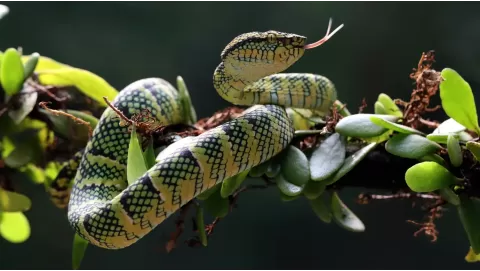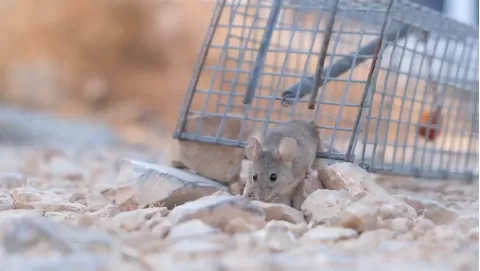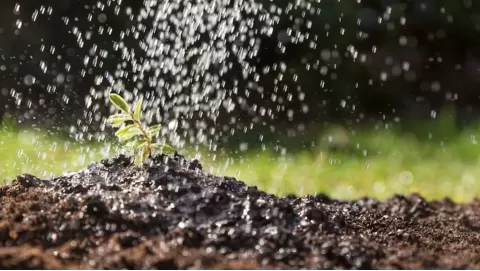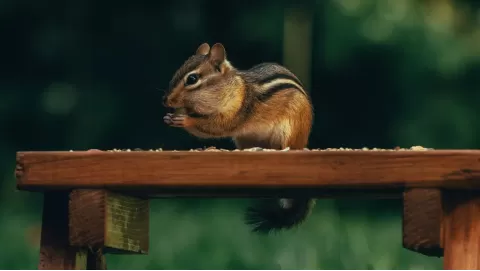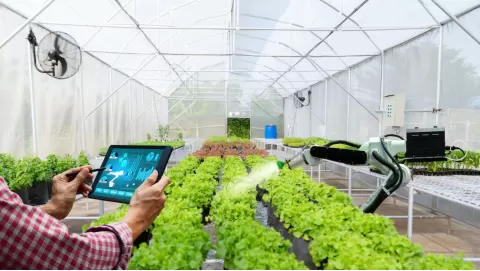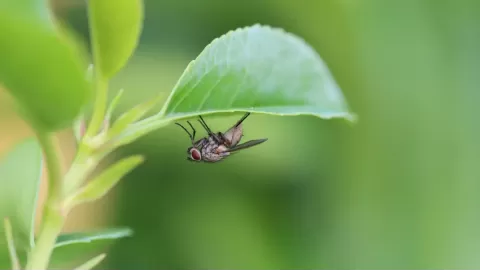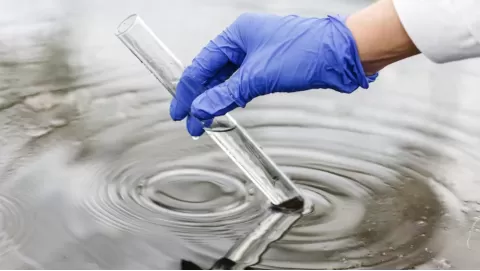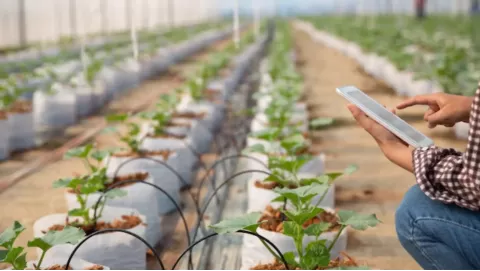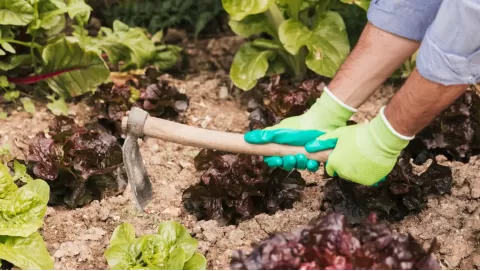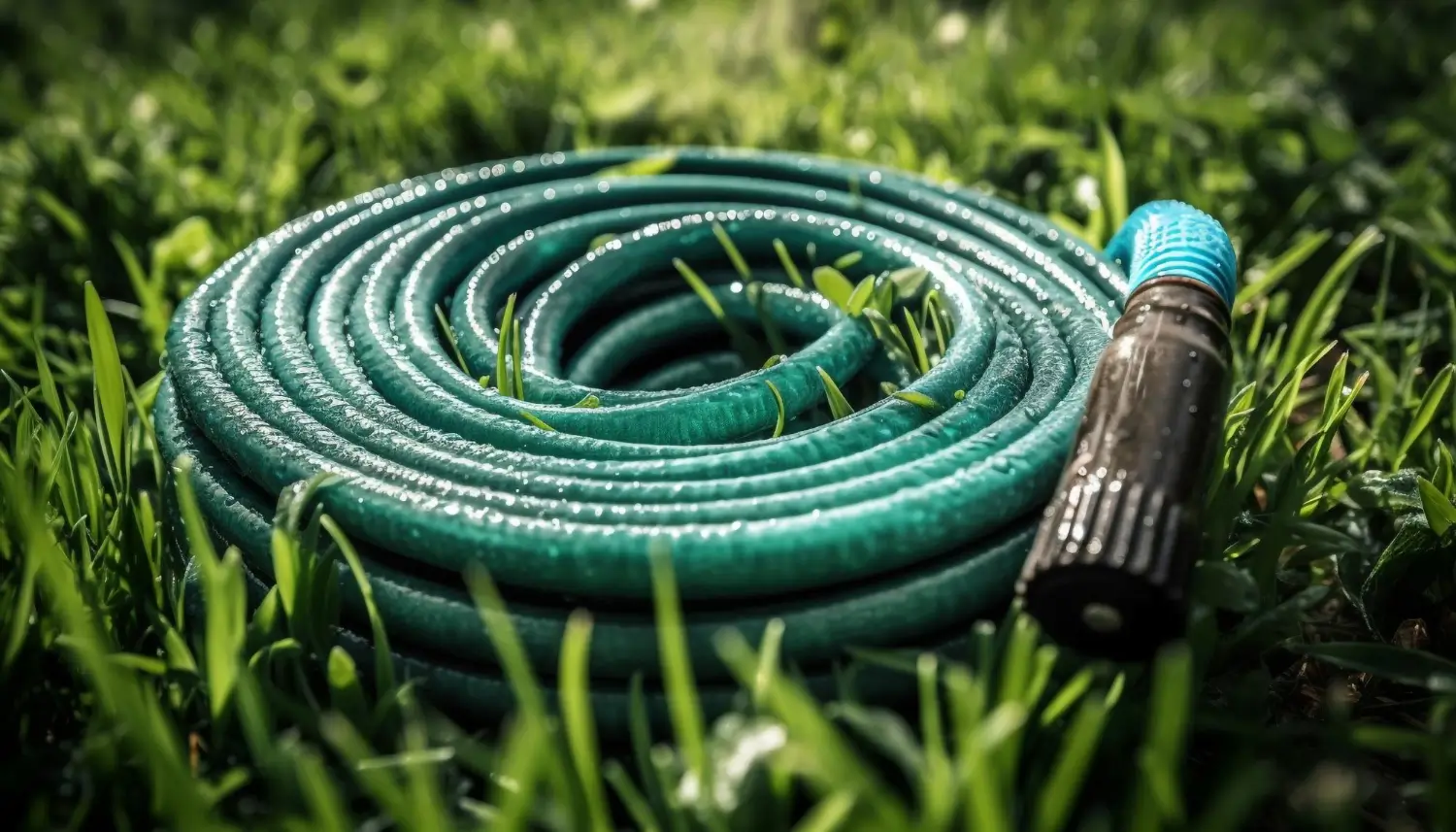
Best soaker hoses for efficient and deep root watering
At the hottest point of summer, gardens often need to be hydrated as the sunny conditions cause them to dry up. Watering is one of the classic challenges many gardeners face, with traditional methods sometimes making it worse. Overhead sprinklers can waste water by spraying the sidewalk or the driveway, or it may evaporate before it even gets to the plants.
This is where soaker hoses can help. They are able to eradicate the standard problems with traditional watering methods. Soaker hoses deliver moisture directly to the plant roots rather than spraying water into the air, cutting back evaporation and water runoff. Soaker hoses conserve water and promote healthier plant growth by providing moisture. Growcycle has a range of soaker hoses to help gardeners effectively water their plants.
What Are Soaker Hoses?
One type of home garden irrigation system is the soaker hose, which allows for a slow, steady supply of water directly to the roots of plants. Soaker hoses are not like traditional hoses that spray water into the air. Instead, they are made with porous material and allow water to seep out all along the length of the hose. This method of watering directly reduces the amount of wasted water, improving overall irrigation efficiency.
Traditionally, soaker hoses are the result of early experiments with drip irrigation, a technique that has origins in ancient cultures. However, the soaker hose was introduced in the 1970s, when a need arose to find more evaporation-resistant watering methods for gardens and landscapes. With the advancement of materials such as rubber and vinyl, producing durable hoses capable of withstanding diverse weather conditions and providing reliable long-term performance became more feasible.
How Do They Work
The magic of soaker hoses comes from the tiny pores that line the length of the hose. These pores create a permeable layer that allows water to seep out slowly, providing the soil surrounding it with a steady stream of moisture. The slow release of water also allows for direct absorption at the plant roots as opposed to evaporating or running off the soil surface.
This system of irrigation is different, as compared to other methods of sprinklers and manual watering. Sprinklers do not always have an even distribution of water, which means some places may receive more water than others, which can be wasteful. Watering by hand is time-consuming and inefficient; dry spots or too much water can easily happen. Soaker hoses, on the other hand, deliver moisture evenly along the length of the hose, which helps mitigate the risk of uneven watering while also minimizing evaporation.
Deep Root Watering
Soaker hoses provide the best benefit of supplying deep root watering. That not only allows the water to go directly to the roots, but it also enables the plants to grow deeper roots that can access resources from a larger volume of soil. Deep-rooted plants tend to be healthier and less susceptible to drought and environmental stress.
Deep watering, in turn, encourages soil structure and moisture holdings. Soaker hoses help roots sink deeper into the soil, which leads to improved water retention, meaning less frequent watering. This guarantees that plants are getting the moisture they require when they need it most, improving overall plant health and productivity.
Key Benefits of Using Soaker Hoses
Soaker hoses have a few big advantages, so they are a great option for gardeners who want to improve the efficiency of their watering systems. The following are the main advantages of using a soaker hose in the garden:
1. Water Efficiency and Conservation
The main advantage of using a soaker hose is saving water. They also take water directly to the earth, reducing wastefulness.The water trickles out slowly through the hose so it can be soaked up by the roots where it’s needed most. Using this method of direct watering, less water is wasted, making it an environmentally friendly approach that can lower the water bills.
2. Promotes Deeper Root Growth
Soaker hoses deliver slow, steady watering, which helps plants establish deep roots. By watering less frequently, the plant is encouraged to send roots deeper into the soil so it can reach the moisture. This leads to healthier plants that are more drought-tolerant and suck up water and nutrients from a larger volume of soil.
3. Even and Consistent Watering
They release water evenly along their length, helping to equally moisten the soil with water. This is particularly useful for garden beds or rows of plants that require even watering. Water is taken in by the soil at a constant rate with soaker hoses, making certain that every plant gets the correct amount of moisture in this way.
4. Reduced Risk of Fungal Diseases
This is because spraying water on the leaves or plants can cause mold, mildew and other fungal diseases. Soaker hoses water the soil rather than leaf-covering the plants being drenched. This minimizes the chances of fungal diseases, which would be more prevalent in the damp, humid environment created from over watering.
5. Time and Effort Savings
Soaker hoses can be easily set up and left in place for weeks, delivering a consistent watering to the garden without much additional effort. This makes it possible for gardeners to attend to other things while making sure their plants get the moisture they need. Soaker hoses are especially effective in large garden areas in which watering by hand would be quite tedious and time consuming.
6. Improved Soil Structure and Moisture Retention
By encouraging deep watering, soaker hoses also help improve soil structure. This allows air and nutrients to flow deeper into the soil more easily as water seeps into the soil. Furthermore, watering deeply helps the soil retain moisture, meaning less frequent sessions of watering.
Factors to Consider When Choosing a Soaker Hose
Soaker hoses promote deep watering and enhance soil structure. When water gets into the dirt, it fragments compacted areas so air can enter the soil and deliver nutrients to plant roots more efficiently. Also, deep watering retains moisture in the soil, making less watering sessions needed.
Material and Durability
Soaker hoses are made from various materials, such as rubber and vinyl, and have unique strengths.
- Rubber: Rubber hoses are durable, flexible, and can withstand extreme weather. They are less prone to fissures and premature wear and can last for years, but they tend to be pricier.
- Vinyl: Vinyl hoses are lighter and less expensive to make than rubber, but they’re less durable. They can crack or break down easier in the sun or extreme temperatures. They do though have their use for occasional use, if anyone is looking for a cheaper alternative.
It should also be resistant to damage caused by weather (rain, frost) or UV rays (sunlight). Hoses capable of withstanding sun and freezing temperatures will be a little more durable.
Hose Design and Pore Distribution
Good watering depends heavily on the design of the hose and the pores where the water oozes out.
- Consistent pores: Quality soaker hoses have pores that are evenly spaced, which helps with even water distribution across the garden. This helps keep some areas from being too dry and others from being too wet.
- Manufacturing differences: All soaker hoses are not created equal. Others are less consistent and have irregular pores that can lead to uneven watering. Luckily, with each of these hoses, it’s important to grab something from a reputable brand so that getting even dispersion of water.
Water output is also key. The hose will put out plenty of water for the size of the garden. If the water output is too low, plants may not receive enough water; if it’s too high, it could result in water wastage.
Size, Length, and Compatibility
It is very important how to choose the right size and length of the hose.
- Length: Soaker hoses vary in length, so it is important to consider the size of the area need to water. It’s good to choose one that suits the size of the garden. A hose that is too short won’t reach enough area and is a waste of time, while one that is too long won’t function properly.
- Water pressure: Each hose requires different water pressures. Some may do better with high pressure, others with low pressure. So, it is essential to have a hose that matches the water pressure from the home’s water system.
- Connection compatibility: The hose must be suitable for the current watering system, which includes connectors or adapters. Many hoses have connectors built in; others will require additional fittings.
Top Soaker Hose Options
Growcycle has everything one needs in high-quality garden hoses that will help get the job done right.
1. Gilmour Flexogen Super Duty Garden Hose
The Gilmour Flexogen Super Duty Garden Hose is one of the best-reviewed hose products for home and professional applications. Famous for its strength, flexibility, and durability, this hose has 8 layers of reinforced material that will not kink or leak.
The hose achieves consistent water flow making it ideal for watering large garden sections. This is truly leak-free and flexible to serve in multiple watering needs, so that plants get the amount of water they need.
2. Flexzilla Garden Hose
Another fantastic choice for gardeners looking for a flexible, durable option is the Flexzilla Garden Hose. Constructed out of a hybrid polymer material, this hose remains flexible in various weather conditions, to easily move around without getting stuck. It is light but strong, which makes it just right for water use every day.
The flexibility and tangle-free nature of the Flexzilla hose can help gardeners effectively water plants, particularly in fields where a steady water flow is needed.
3. Orbit ExoJacket Fabric Hose
The Orbit ExoJacket Fabric Hose combines lightweight and industrial-grade features for an optimal watering experience. This hose is designed with innovative Easy Spin couplings that allow it to unwind and unkink itself during use, improving convenience and minimizing effort.
The innovative design of the ExoJacket hose is ideal for gardeners who want an easy-to-use watering system for efficient garden watering.
4. Andrews Two Tube Soaker Hose
Avoid water waste by watering directly at the roots of the plants with an Andrews Two Tube Soaker Hose. It encourages deeper root growth by allowing moisture to penetrate the most essential areas of the plants.
Great for watering in case the garden requires consistent deep watering. Its unique structure allows water to gently seep into the earth before it spills away, making it a useful, earth-friendly option for gardeners.
Installation and Setup Guide for Soaker Hoses
Installing a soaker hose is simple, though planning and placement are essential for the soaker hose to function as intended. Here’s a straightforward guide to help with installation and setup.
Pre-Installation Planning
Plan where and how the soaker hose will be used before installation.
- Identify where the plants and where the users need the water by looking at the garden. Consider the size and shape of the garden beds as well as which plants will require more water.
- Locate the water source (often an outdoor faucet) and ensure it is near the area where people plan to lay the hose.
- Think about the path the hose will take to water all the plants. The best results can be had when positioning the hose on the plants’ root areas.
- Soaker hoses are most effective in the soil or beneath mulch. Don’t place the hose on tough surfaces such as concrete, where it will not dispense effectively.
- And think about water pressure to make sure the hose will deliver enough water to the entire garden.
Step-by-Step Installation Instructions
Here, follow these simple steps for soaker hose installation:
- Run the hose out along the planned route. It is important that it gets to all the plants that people wish to water.
- In the case of a large garden, users may require more than one hose or connectors to connect them.
- For the best performance, the hose should be slightly buried in the soil or under mulch. Dig a narrow trench (just 1 to 2 inches) with the hose in it. This causes the water to penetrate further into the ground.
- If using mulch, simply lay the hoses beneath the mulch rather than digging a trench.
- Connect the hose to a water source; ensure a secure fit. For the purpose of controlling the water flow in some hoses, a pressure regulator is required.
- Connect the hose to the faucet or irrigation system, using a connector or splitter if necessary.
- Use stakes, garden clips or other tools to secure the hose in place. This is particularly necessary when the hose will be free-moving because of wind, or water pressure.
- When securing the hose, ensure it is not pinched or damaged.
Tips to Avoid Common Installation Mistakes
Here are some tips to help avoid the most common errors when installing the new water heater:
- Avoid Over-Watering and Clogs: Prevent the hose from flooding an area for too long, causing waterlogging. Run the hose and check the water flow to check it for clogs. If the water isn’t coming out straight, clean the hose or inspect it for blockages.
- Ensure Even Water Distribution: Position the hose to cover the rain gutters evenly for even water distribution so the plants get water as per their need. Don’t lay the hose where water could collect, since this will overwater some plants and leave others too dry.
- Check the Water Pressure: Water pressure that is too high can cause water to spray out and be wasted. Be sure the hose is free of pressurization, using a pressure reducer where required.
FAQs
Which type of soaker hose is best?
The best soaker hose will depend on what the garden needs. Choose hoses that are constructed from sturdy materials such as rubber or vinyl. If want to water the plants with deep roots, the Andrews Two Tube Soaker Hose is a great choice.
Are soaker hoses water efficient?
Yes, soaker hoses are extremely water-efficient. They transfer water directly to plant roots, reducing evaporation and runoff, contributing to water-saving.
What is the best length for a soaker hose?
The correct span will depend more on the garden’s size. If watering with a hose, measure the garden for proper coverage of all plants.
The Bottom Line
Soaker hoses have its own place in efficient watering of plants, particularly during summer time as water conservation is very important. They deliver slow, steady water straight to the roots of plants, wasting less water and making them grow stronger and healthier. Soaker hoses also minimize evaporation, runoff and the chance of fungal diseases, making them a sustainable and effective option for all gardeners.
Growcycle is helping gardeners make better, more efficient watering decisions with their durable, eco-friendly alternatives. Their collection means every gardener will be able to find a soaker hose to suit their garden’s individual needs, helping to keep plants hydrated while minimizing water use.
Disclaimer: This material is for informational purposes only and should not be relied on for legal, medical, financial, or any other form of professional advice.



